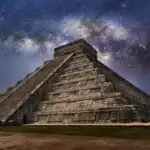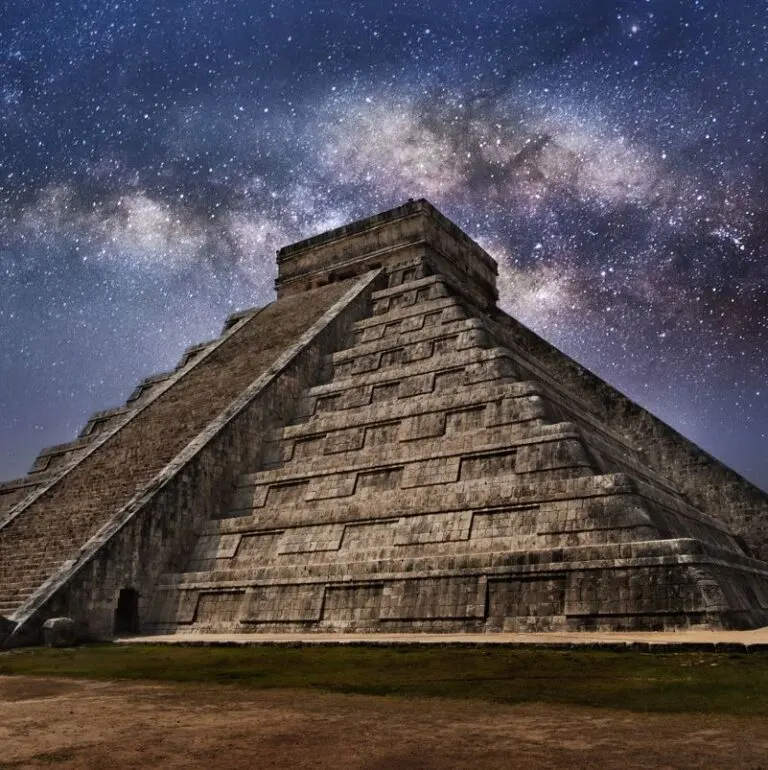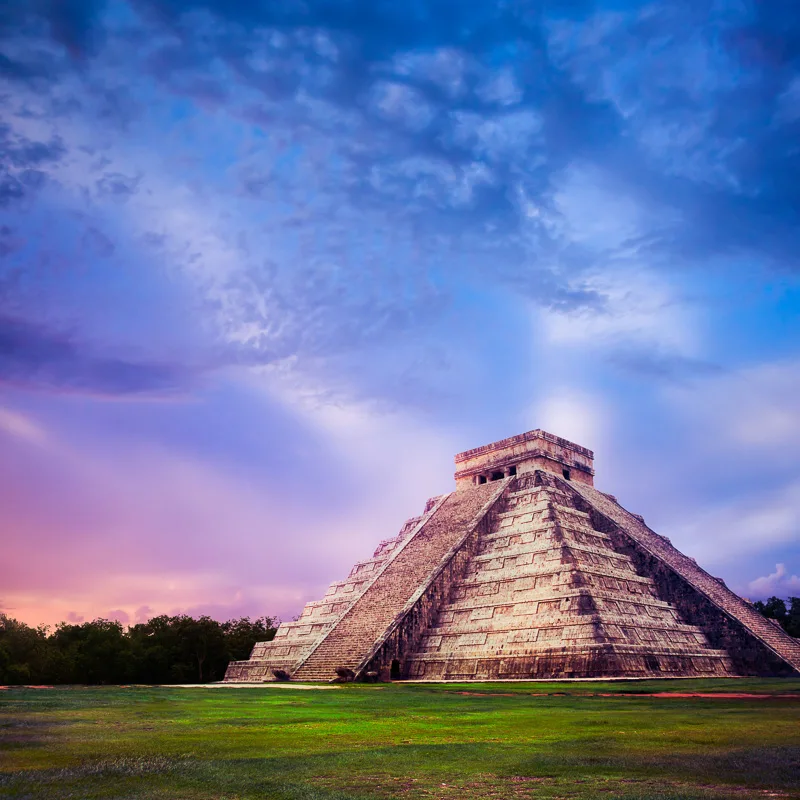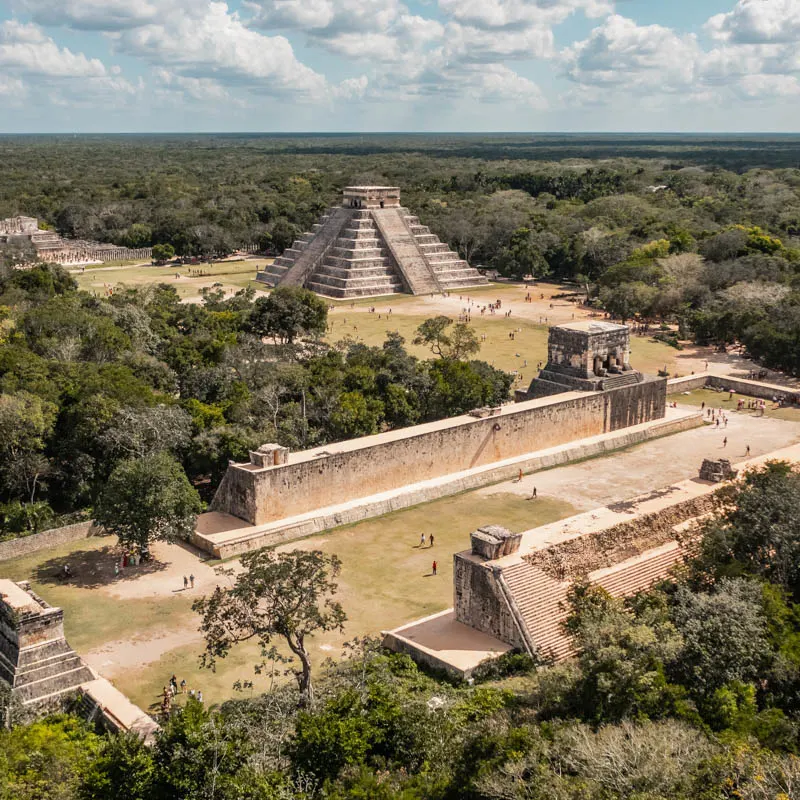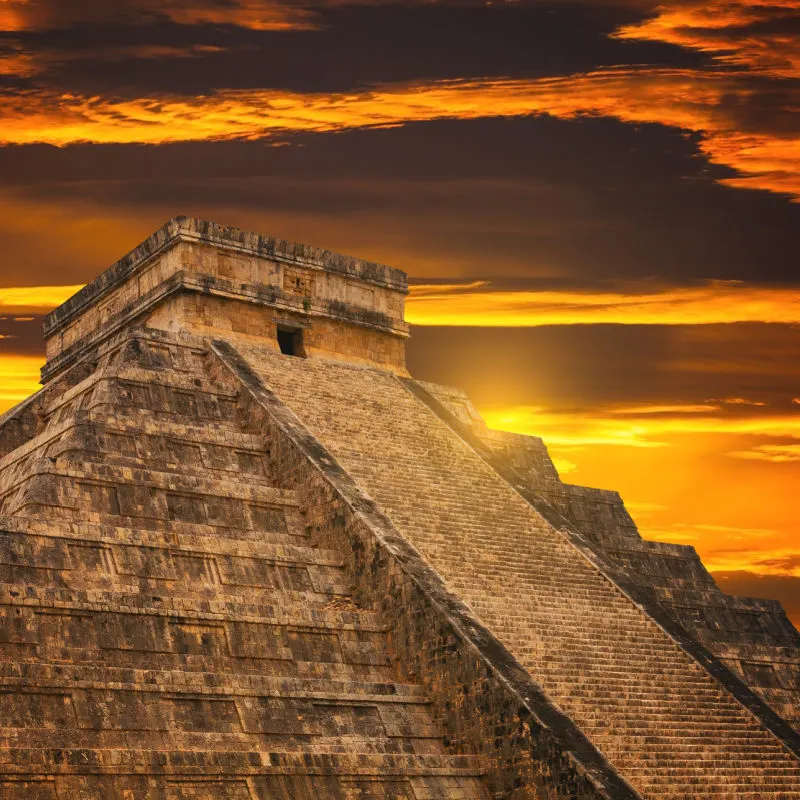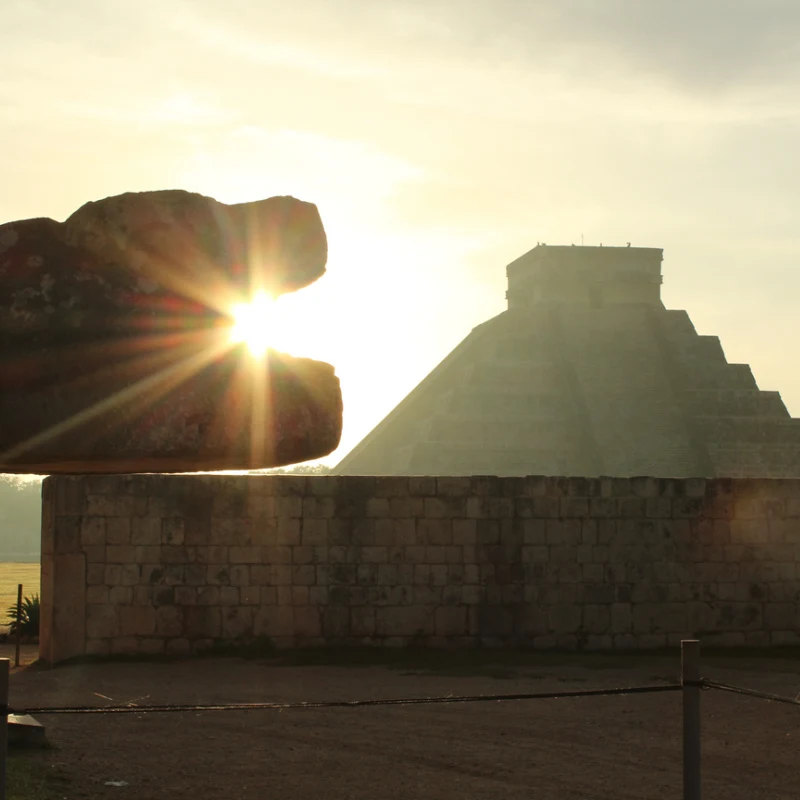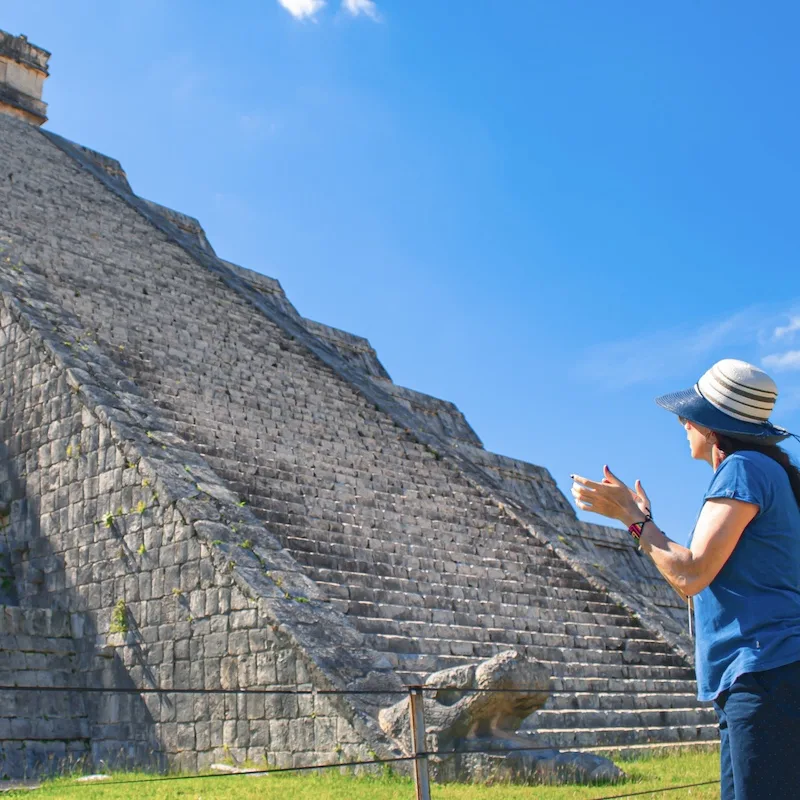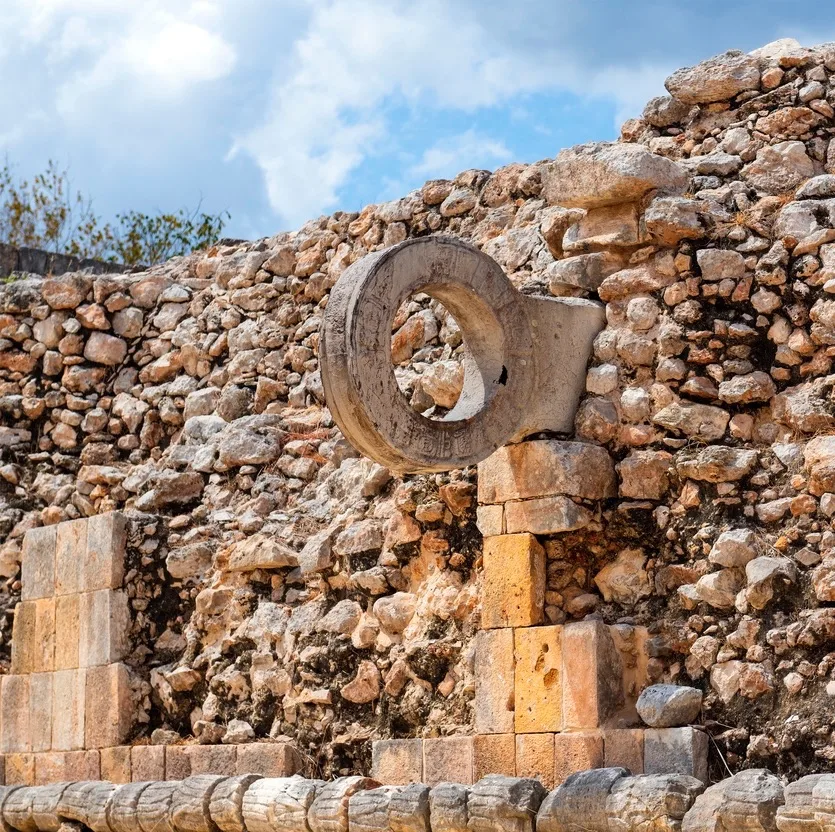The Huallamarca pyramid sits in Lima's upscale San Isidro neighborhood, surrounded by homes, embassies and high rises.
John Otis/NPR
LIMA, Peru — Although the top tourist destination in Peru is the ancient Inca citadel of Machu Picchu, high in the Andes Mountains, the capital Lima also holds a treasure trove of ancient ruins — so many, in fact, that authorities can't take care of them all.
The city is home to more than 400 known pyramids, temples and burial sites, many of which predate the Incas and and are known in Spanish as "huacas." They sit next to modern shopping centers, hotels and highways or rise up in the middle of neighborhoods in this city of 11 million people. Meanwhile, archaeologists keep digging up new sites.
Pedro Pablo Kuczynski, a former Peruvian president who lives across the street from a pyramid called Huallamarca, built around 1,800 years ago, says with a smile: "I know where I am when I wake up in the morning. I'm in Peru!"
The ancient Inca ruins of Machu Picchu in Peru, seen on Feb. 15, 2023.
Carolina Paucar/AFP via Getty Images
Due mostly to budget limitations, Huallamarca is one of only 27 sites in Lima that have been excavated, restored and opened to visitors, according to archaeologists who spoke with NPR.
Many other sites are deteriorating. Squatters have occupied some, and others have become de facto garbage dumps or gathering spots for drug users and homeless people.
"Everywhere you dig, you will find something — because Lima was home to great civilizations," says Micaela Álvarez, director of the museum at Pucllana, a massive pyramid in Lima's business district of Miraflores. "But it's impossible to save everything in a poor country."
Pucllana is one of the exceptions.
Thought to be about 1,500 years old, the pyramid was a ceremonial site for the Lima Indigenous group that gave this city its name. Excavations began in 1981 and continue today.
On a recent morning, workers scraped sand and dirt from part of the site that archaeologists are beginning to explore for the first time. Nearby, guides pointed to the intricate brickwork, which has withstood earthquakes, and then led visitors to the top of the 82-foot-tall pyramid for views of the Pacific Ocean.
Workers excavate part of the Pucllana pyramid.
John Otis/NPR
Among the visitors was Manuel Larrabure, a professor at Bucknell University in Pennsylvania who was born and raised in Lima but had never been to Pucllana.
"It's very impressive," he said. "The tendency is to look outside of Lima for interesting things, but it's good to look inside and to appreciate our own culture. People are still getting to know these sites."
Before it was restored following the start of excavations some 40 years ago, Pucllana was routinely looted and abused. At one point, a factory was using Pucllana's sand and clay to make bricks. Tour guide Blanca Arista says the pyramid also served as a neighborhood playground — and a motocross track.
"It's unbelievable, but several groups were practicing motocross," she said. "So, imagine different groups riding motorcycles, riding bikes."
Indeed, Lima's ancient Indigenous sites have, more often, been desecrated instead of safeguarded, says Giancarlo Marcone, a Peruvian archaeologist and professor at the University of Engineering and Technology in Lima.
Some were bulldozed to make way for apartment blocks and streets amid a wave of migration from the countryside that began in the 1950s.
"That put a lot of pressure on the city, and we didn't have good planning," Marcone says. "Until recently, we didn't really care about what we had."
Attitudes shifted as Peruvians became more sensitive to their cultural heritage and the country's ancient sites began to attract more international tourists. Janie Gómez, who until April was deputy culture minister, said the government of President Dina Boluarte is committed to preserving these sites.
Tour guides gather at the Pucllana pyramid, located in a business district of Lima. Pucllana is one of the few ancient sites in Peru's capital that can be visited by tourists, who arrive by the thousands every year.
John Otis/ NPR
"Their recovery will prevent them from deteriorating and being invaded," she told the state-run Andina news agency in January. "The millennial history over which Lima was built must not be lost."
However, Peru is struggling to reduce poverty and improve hospitals and schools, Marcone says. Thus, governments have been unable or unwilling to finance robust excavations or to turn more than a few sites into tourist attractions. The result is that many have been left in limbo.
Rosa María Barillas, a Peruvian archaeology student who recently completed fieldwork at an ancient temple on the outskirts of Lima, recalls looters prowling the area.
"I had to chase them away," she says.
Benito Trejo, president of the local neighborhood association, at the top of Infantas 1 pyramid next to bags of sand that people have been digging up, possibly to sell to construction companies.
John Otis/ NPR
Other sites have been colonized by squatters. The archaeological complex at Mateo Salado, near Lima's international airport, features a beautifully restored 1,000-year-old pyramid, but is also home to several modern houses. Until 2013, when major restoration work began, farmers used the site to cultivate roses and neighborhood kids played soccer there.
In the working-class neighborhood of Los Olivos, a dusty, dun-colored archaeological site called Infantas I is hemmed in by streets and houses. Ashes from a campfire are smoldering while trash piles up in several areas. Three youths are smoking crack, and a shirtless man is digging up sand and putting it in sacks. The area is part of a series of temples, but has yet to be excavated.
Benito Trejo, who heads the neighborhood committee, calls Infantas I a headache.
"It's not a good thing, because these sites are ignored by the government which is supposed to look after them," he says.
There was no response to NPR's requests for comment from the Culture Ministry.
For now, archaeologists say that surrounding communities must get more involved in preserving and promoting the sites. Pucllana, for example, has been used for art exhibits, while other sites have hosted film screenings.
At Mateo Salado, fifth graders were recently visiting the site and drawing pictures of the ruins, which are part of their school logo.
"We shouldn't look at these sites simply as relics of the past," says Andrés Ramírez, one of the instructors. "They should be part of everyday society. That's what we are trying to promote."
 (Nazca. Mantle (“The Paracas Textile”), 100-300 C.E. Cotton, camelid fiber, 24 5/8 × 58 11/16 in. (62.5 × 149 cm). Brooklyn Museum, John Thomas Underwood Memorial Fund, 38.121)
(Nazca. Mantle (“The Paracas Textile”), 100-300 C.E. Cotton, camelid fiber, 24 5/8 × 58 11/16 in. (62.5 × 149 cm). Brooklyn Museum, John Thomas Underwood Memorial Fund, 38.121)
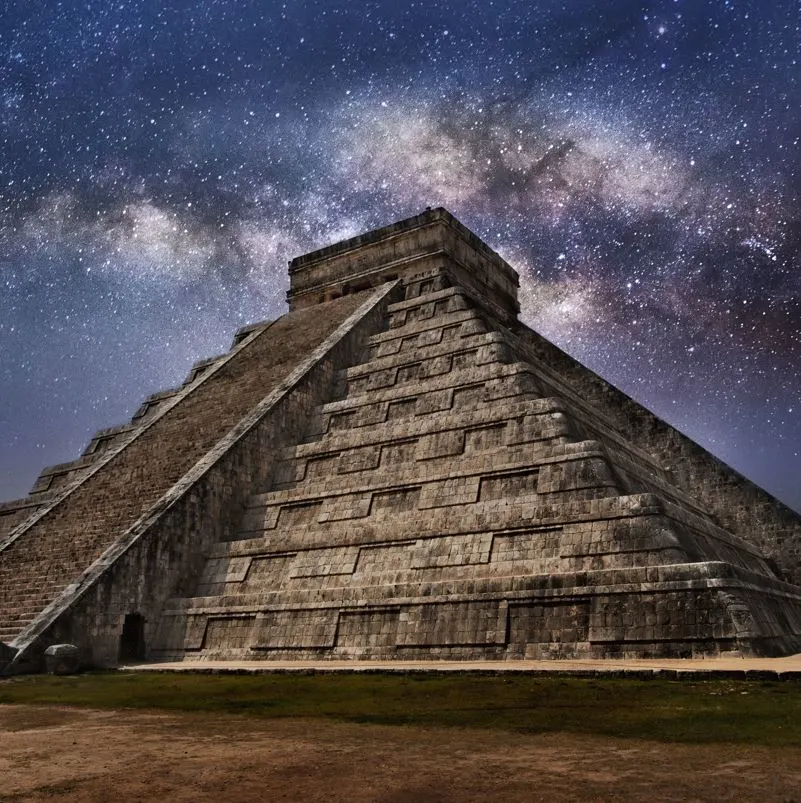
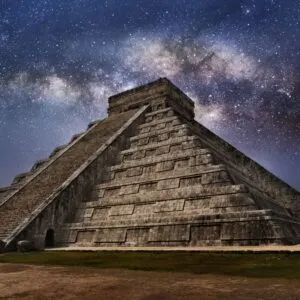 300w,
300w, 